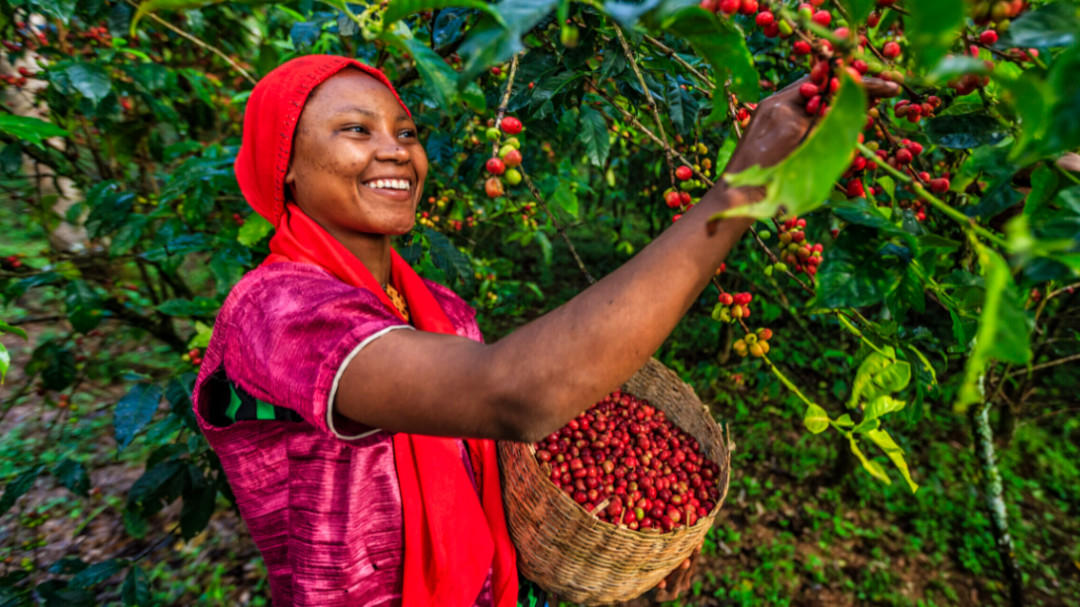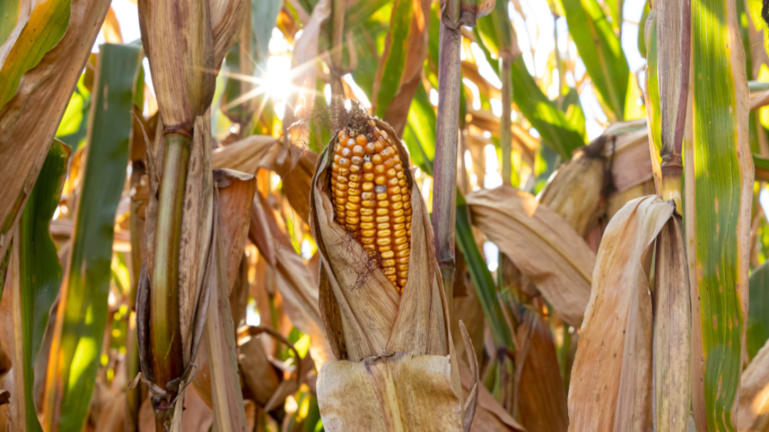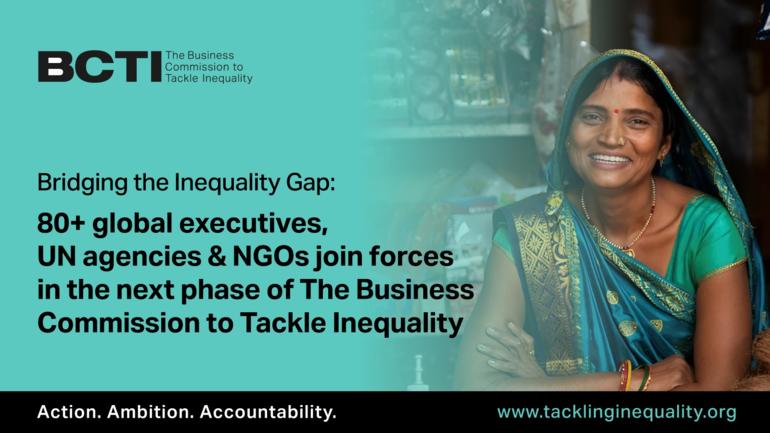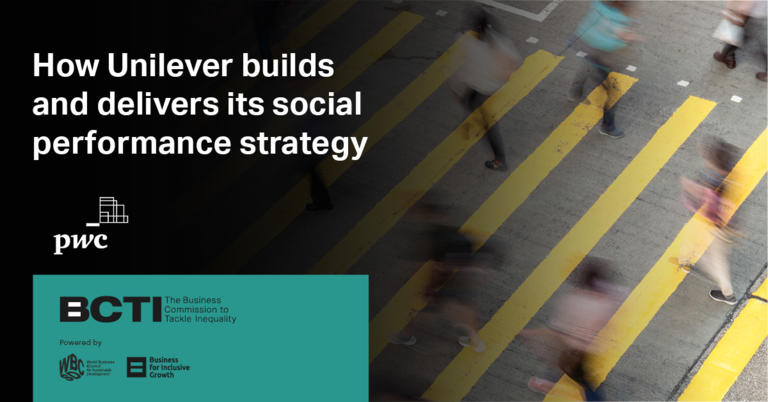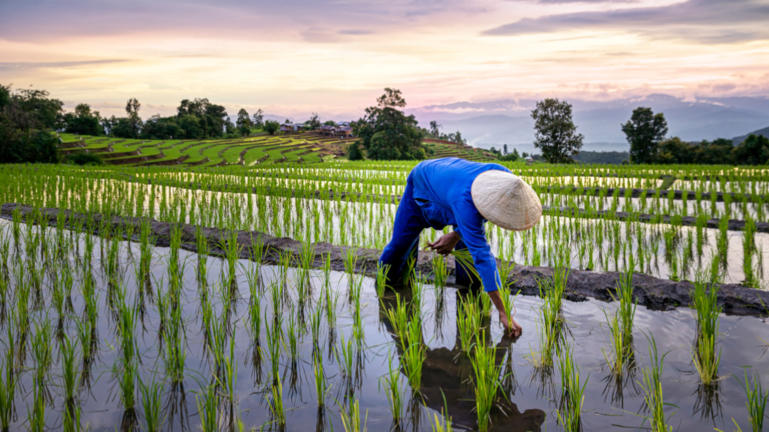Today, over a billion working people worldwide earn less than they need to afford a decent standard of living, including sufficient food, water, housing, education, healthcare and other essential needs. More specifically, agriculture workers make up two-thirds of the 740 million people facing extreme poverty.
Paying and promoting living wages and incomes is one of the 10 actions identified by the Business Commission to Takle Inequality (BCTI) as necessary to address mounting inequalities. Both living wage and living income refer to the amount of money needed to afford a decent standard of living for a worker and their family. Living income applies to people who do not earn a wage or who combine wage income with income from other sources – typically farmers. Promoting living incomes for farmers worldwide is a first step on the path to prosperity, and a useful framework to understand the responsibility of a company to support farmers within their supply chains. Importantly, living income cannot be seen as an end goal, but rather a minimum threshold for prosperity.
The 2023 Food and Agriculture Benchmark published by the World Benchmarking Alliance (WBA) found that less than 4% of the 350 most influential global food and agriculture companies assessed are identifying living income benchmarks or calculating living income gaps in their supply chains.
“Our data shows that companies are improving farmer livelihoods but not at a level sufficient to lift them out of poverty. To reward farmers fairly, corporates in agri-food value chains must take coordinated action to close living income gaps. Starting with understanding the materiality of the issue to supply chains and sourcing locations, and moving on with setting commitments and targets. Agribusinesses can engage with collaborative platforms and with partners already active in the sector to learn from others and maximize their impact.” Viktoria de Bourbon de Parme Food and Agriculture Transformation Lead, World Benchmarking Alliance
WBA’s research highlights the need for scaling up existing business action. Closing the gap between the income currently earned by farmers – which is insufficient to guarantee a decent standard of living – and the living income must be a priority for all companies in the agriculture sector. The creation of a regenerative and equitable food system producing healthy, safe and nutritious food for all – as outlined in WBCSD’s Vision 2050 – requires the adoption of living income strategies. These strategies are also underpinned by a strong business case:
- Promoting living incomes will help companies comply with increasingly stringent human rights legislation, for instance by reducing risks of child labor
- Businesses who pay living incomes are better able to address reputational risks and capture new customers, in an era of rising consumer expectations
- Living incomes are a tool to ensure supply security, as they enable farmers to invest in their operations and thrive in their business
This is exactly why WBCSD’s Equitable Livelihoods team has brought living incomes to the attention of its members. A new Living Income Business Toolkit is available to all WBCSD Agriculture & Food members – which will enable action by furthering businesses’ understanding of the living income concept, laying out the sequential steps businesses can take to promote living incomes, and by presenting the foundational elements of living income business strategies. On this page, you can find our introductory one-pager.
These strategies should not exist in silos. As a matter of fact, the living income journey can support corporates in meeting Scope 3 emissions reduction targets as well. Businesses can use price premiums, cash transfers, or payments for ecosystems services to reward farmers for regenerative practices – thereby integrating equity considerations into ongoing climate and nature action. Corporates engaged in regenerative agriculture can adopt living income strategies to promote equitable livelihoods for farmers.
Many agriculture and food businesses have been investing in strengthening farmer livelihoods for decades – for instance by supporting strong land tenure, promoting women’s empowerment, putting in place controls for rising input costs and facilitating access to finance. Poverty and inequality, however, still persist. Corporate action must be strategic and must be implemented at scale to ensure that all farmers worldwide can meet their basic needs. Putting people – including farmers – at the center of strategies to deliver net-zero and nature positive food systems lies at the core of a just transition for agriculture sector companies and represents an imperative for future-proof business conduct.
Our Living Income Business Toolkit can be a useful resource for businesses embarking on the living income journey, engaging with suppliers through living income and decent work strategies, and for all businesses aiming to move the needle across the sector.
To access the full resource and training materials, please reach out to the Farmer Livelihoods team.
To learn more about WBCSD’s work on Equity, please reach out to the Equity Action team.

